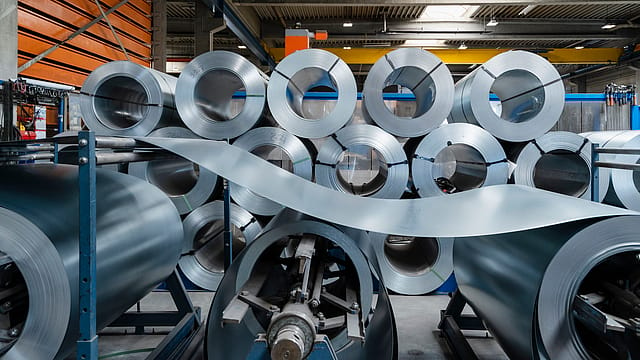India's great opportunity to emerge as steel export hub
ADVERTISEMENT

Indian steelmakers -- including Tata Steel, JSW Steel and Steel Authority of India (SAIL) -- are pursuing aggressive capacity expansion, expecting a surge in domestic demand with the infrastructure development and steel shortage in key international markets in the wake of Russia-Ukraine conflict. They look to enhance the capacity by 70-100% in this decade as the government's National Steel Policy estimates a domestic requirement of 300 million tonnes per annum (MTPA) by 2030. The new capacity creation is expected to require an investment of ₹7-8 lakh crore, say industry experts.
The country currently has 142 MT of steel manufacturing capacity and produced 118 MT in 2021. The excess capacity and availability of iron ore are already turning Indian players aggressive in the international market. During the time of lockdowns, the steel majors had increased exports to maintain cash flow.
India has an opportunity to be an exporter like Japan or China, says TV Narendran, managing director and CEO, Tata Steel. "China exports 60 MT of steel by importing iron ore and coal from other countries. Japan exports 30MT. Korea also exports. They import raw materials to make steel and export. India has a great opportunity here to become an exporter of steel because we have rich iron ore resources," he added.
Tata Steel aims to double its capacity to 40MT by 2030 with the expansion of its existing steelmaking facilities at Angul, Kalinganagar and Jamshedpur. The capacity doubling expenditure is expected to be ₹1 lakh crore.
According to Seshagiri Rao, joint managing director and group chief financial officer, JSW Steel, the capacity needs to be expanded by 10 MT every year to meet the incremental domestic demand. "In addition, there is huge demand for Indian steel in export markets which China has vacated," he said recently. The domestic steelmakers exported around 22 MT for the full financial year. JSW Steel plans to increase capacity to 45MT by 2030 from 27MT at present.
December 2025
The annual Fortune 500 India list, the definitive compendium of corporate performance, is out. This year, the cumulative revenue of the Fortune 500 India companies has breached $2 trillion for the first time. Plus, find out which are the Best B-schools in India.
Public sector steel major SAIL is looking to more than double capacity to 50 MT by 2030. JSPL plans to raise total crude steel capacity to 15.9 MT by March 2025 from 8.6 MT.
Post the US sanctions on Russia, leading Indian steel companies can capture market share in Europe and the Middle-East, if they enhance their capacity utilisation levels. They could also pitch for a greater footprint in the US, where Russia and China are key suppliers.
